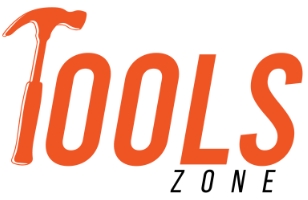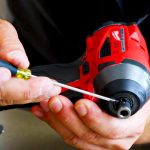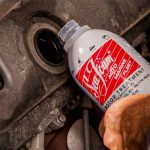The main difference between a torque stick and a torque wrench is that a torque stick is preset to a specific torque value and automatically releases when that torque is reached, while a torque wrench allows the user to set their desired torque value and indicates when that torque value is reached.
Torque sticks and torque wrenches are both useful tools for tightening bolts and fasteners to a precise torque specification. But which one should you use and when? This article explains the key differences and applications of torque sticks versus torque wrenches to help you decide.
What is a Torque Stick?
A torque stick, sometimes called a torque limiter, is a long-handled tool that is preset to release at a specific torque value. Torque sticks come with various drive sizes (3/8”, 1/2”, etc) to fit different bolt heads.
They are available with preset torque settings ranging from say 30 ft-lbs to 250 ft-lbs. So you select the torque stick that matches your target torque.
Here’s a simple analogy – think of a torque stick as a sort of breakaway bottle opener. It will turn and turn, building up torque, until it reaches its release point. Then it simply disengages. No guesswork required.
The main benefits of using a torque stick are:
- Requires no setup or calibration – just grab one with your needed torque rating
- Automatically releases at its preset torque value
- Ensures bolts are tightened to the correct spec
- Prevents over-tightening and damage
- Simple and fast to use even for beginners
Torque sticks are ideal for high-volume, repetitive tasks where the same torque must be consistently applied, such as on an assembly line. No checking or adjustment needed. Just grab, stick, and click done!
What is a Torque Wrench?
A torque wrench is a precision-calibrated tool that allows the user to dial in a specific torque value on a scale. Quality wrenches are accurate to +/- 4% or better.
As you turn a bolt with a dialed-in torque wrench, it will “click” when the preset torque is reached, indicating to stop tightening. This ensures bolts are tightened to the needed torque spec – not too loose, not too tight.
Benefits of a torque wrench include:
- Adjustable torque settings for different applications
- Very precise torque control
- Audible and/or tactile feedback indicates when the target torque is reached
- High-quality tools maintain accuracy over years of use
- Can measure fastener tension for diagnostic purposes
The flexibility to set specific torque values makes a torque wrench the choice for more precision applications. And allowing verification of existing bolt torque is useful for maintenance checking.
So when should you use each type of tool? Here is a handy comparison:
| Torque Stick | Torque Wrench |
| Preset to a fixed torque value | User-adjustable torque setting |
| Automatically releases at target torque | Clicks when target torque is reached |
| Best for high-volume repetitive tasks | Best for precision tightening jobs |
| Easy for production/assembly lines | Essential for critical applications |
| No setup or calibration needed | Requires calibration for accuracy |
| Low cost per task | Higher initial investment |
Let’s explore how these characteristics suit torque sticks and torque wrenches for different uses.
Applications for Torque Sticks
Torque sticks really shine where many fasteners need tightened repeatedly to the same torque at high volume.
For example, on an automotive assembly line, many bolts may need to be torqued to 85 ft-lbs again and again as vehicles go down the line. For this, an 85 ft-lb torque stick is perfect rather than needing to manually set and check a proper torque wrench every time.
Just grab, stick, and click done! This makes the process fast, consistent, and foolproof. No operator experience is required.
Other examples where torque sticks work well:
- Production/manufacturing facilities
- Maintenance shops
- Quick lube oil change shops
- Aircraft manufacturing and maintenance
- Motorsports – e.g. swapping wheels with centralized pit crews
Anywhere high volumes of repetitive, same-specification torquing are needed, torque sticks streamline the job.
Think of torque sticks as the fast food of the torquing world – convenient, consistent, no-frills tightening!
Applications for Torque Wrenches
For precision torquing needs, a proper dialed-in torque wrench is a must.
Examples where adjustable torque control matters include:
Precision Equipment
- High-end racing engines
- Aircraft systems
- Sensitive scientific instruments
- Medical equipment
- Robotic systems
These require proper torque per manufacturer specs for optimal function and safety. Torque wrenches allow verified accuracy.
Critical Structures
- Load bearing scaffolds
- Bridge joints
- Building Construction
- Pressurized systems
If joints fail here, catastrophes can occur! Using a verified torque wrench ensures proper fastener tension.
Maintenance and Repair
- Automotive tune-ups
- Production equipment PM
- Wind turbines
- Heat exchangers
- Pressure vessels
For preventive maintenance, technicians need to regularly check existing bolt torque. Only a quality torque wrench can reliably measure and verify if tension is maintained on critical fasteners.
Torque Stick vs Wrench – A Recap
Let’s summarize when you should use torque sticks versus torque wrenches:
Use Torque Sticks When:
- High-volume repetitive torquing needed
- Only one torque spec is required
- Tightening speed is important
- Operator skill level is inconsistent
- No need to measure actual bolt tension
Use a Torque Wrench For:
- Precision torque control is required
- Multiple torque values needed
- Critical applications where torque verification matters
- Quality inspections call for tension checks
- DIY jobs where precision gives confidence
So in essence:
- Torque Sticks – Production efficiency
- Torque Wrenches – Precision and analysis
Now you understand their fundamental differences and applications to decide which is right for your job. Both are invaluable tools for proper torque control. Use the tool fit for the task!
Frequently Asked Questions
Q: Can torque sticks be adjusted like a torque wrench?
A: No, torque sticks are preset at the factory to release at a fixed torque value and cannot be adjusted by the user. To apply different torque settings, you need multiple torque sticks rated for those values.
Q: Why are torque sticks not suitable for some critical applications?
A: Torque sticks only release when their preset torque is reached. They cannot measure the actual tension on an existing bolt like a torque wrench, which is needed to verify proper torque on critical fasteners.
Q: Does lubrication affect the accuracy of torque sticks?
A: Yes, lubrication can allow a torque stick to release at up to 10% higher torque value than its rating. Only use torque sticks dry or lightly oiled for rated accuracy.
Q: How often must a torque wrench be calibrated?
A: Torque wrenches should be calibrated about once a year to maintain accuracy. More frequent use or dropping requires more frequent calibration. Always follow the manufacturer’s guidelines.
Q: Can I use a torque stick and torque wrench together?
A: You certainly can! Use a torque stick to quickly tighten many bolts to specification, then follow with a torque wrench to spot-check proper tension on a few critical fasteners.












Leave a Comment